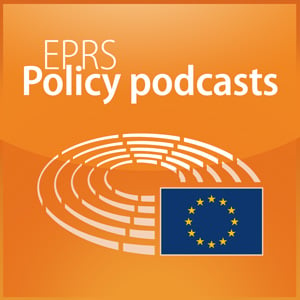European elections 2024: Rules of a pan-European democratic event
European Parliament - EPRS Policy podcasts
European Parliament Webmaster
4.8 • 13 Ratings
🗓️ 19 April 2024
⏱️ 7 minutes
🧾️ Download transcript
Summary
- Original publication on the EP Think Tank website
- Subscription to our RSS feed in case your have your own RSS reader
- Podcast available on Deezer, iTunes, TuneIn, Stitcher, YouTube
Source: © European Union - EP
Transcript
Click on a timestamp to play from that location
| 0:00.0 | Welcome to the European Parliamentary Research Service podcasts. |
| 0:04.6 | As almost 400 million EU citizens prepare to go to the polls in June to elect the next European Parliament, |
| 0:11.7 | we turn our attention to how this massive democratic exercise is organised, |
| 0:16.2 | and the multiple ideas and attempts to strengthen it now and in the future. So stay with us. It's about |
| 0:23.4 | your future. From the 6th to the 9th of June 24, voters across Europe will go to the ballot box |
| 0:33.9 | to elect the 720 members of the European Parliament, 15 more than in the outgoing |
| 0:39.2 | parliament, and as the EU's only directly elected body, this election is one of the largest |
| 0:45.1 | democratic exercises in the world. Yes, it is. So, how is it currently organized? Well, |
| 0:52.9 | EU election rules today are a combination of national and European ones. |
| 0:57.7 | MEPs are elected according to national electoral systems, providing they respect common EU rules, |
| 1:03.9 | such as proportional representation. |
| 1:06.1 | But member states are free to decide on many aspects of the process. |
| 1:10.7 | For example, while in some countries |
| 1:12.8 | voters can only vote for a list without the possibility to change the order of candidates on it, |
| 1:18.0 | in others they can express their preference for one or more candidates. Now, to be elected, a candidate |
| 1:24.6 | needs to receive a minimum number of votes. According to EU rules, |
| 1:29.2 | countries can set their own thresholds, provided they're not higher than 5%. They're also free |
| 1:34.5 | to organise the electoral territory as long as the proportionality principle is respected. |
| 1:40.0 | So whilst in the majority of countries, the national territory forms a single electoral constituency for the European elections, |
| 1:47.0 | some countries have divided their territories into multiple constituencies. |
| 1:51.0 | There are also different rules on the minimum age of voters, |
| 1:55.0 | so whilst in most countries you can vote at 18, in Greece you can do it at 17, |
... |
Please login to see the full transcript.
Disclaimer: The podcast and artwork embedded on this page are from European Parliament Webmaster, and are the property of its owner and not affiliated with or endorsed by Tapesearch.
Generated transcripts are the property of European Parliament Webmaster and are distributed freely under the Fair Use doctrine. Transcripts generated by Tapesearch are not guaranteed to be accurate.
Copyright © Tapesearch 2025.

